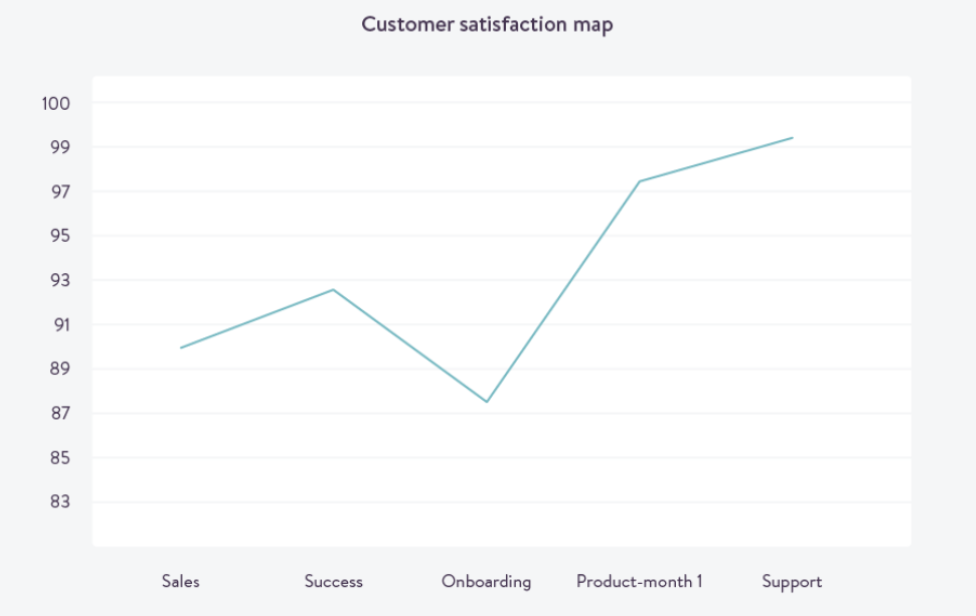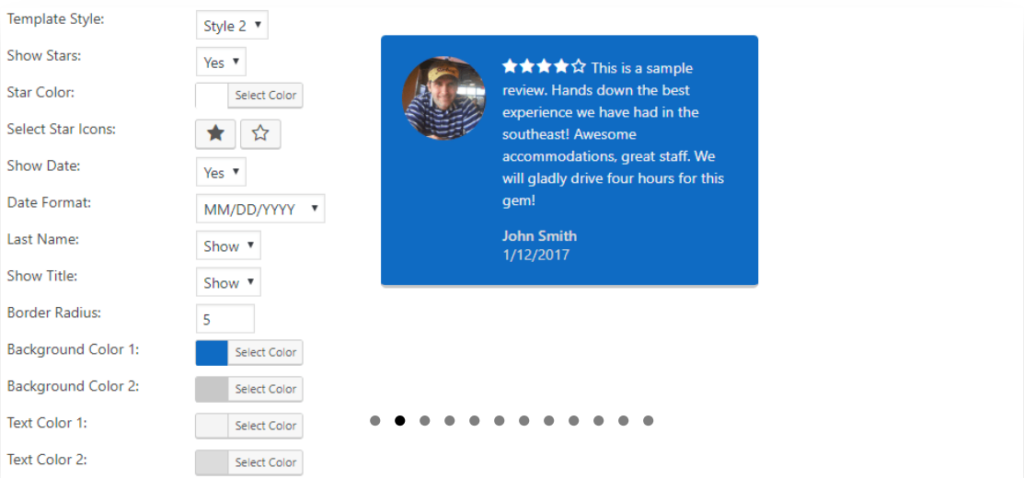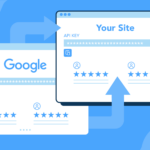Customer satisfaction surveys provide a wealth of information for businesses, enabling them to identify their strengths and areas of improvement.
Tracking customer satisfaction builds brand loyalty, generates customer referrals, and increases repurchase rates. On the other hand, neglecting customer satisfaction reviews results in missing important insights, negative reviews, lower customer retention, and fewer sales.
This guide will discuss key customer satisfaction metrics (CSAT, CES, NPS) and answer questions such as how often should customer satisfaction be measured? It will also cover how tools like WP Review Slider Pro can help you with customer feedback management.
Let’s get started!
Understanding the impact of customer feedback on retention
Customer feedback reveals areas of improvement that a business can address to enhance its services. It provides the opportunity to respond to negative reviews to salvage customer relationships and show quality customer service.
Feedback also influences a brand’s reputation and identity. By responding to comments and highlighting positive reviews, companies can build trust and increase sales.
Customers often check reviews before they make a purchase. It’s estimated that approximately 60% of customers read Google reviews before visiting a business’s website (Forbes.com).
Positive reviews give more information about products or services that new customers may be deciding to purchase. Informative, transparent reviews contribute to the brand’s image and attract new customers in the process.
How customer feedback influences customer acquisition
Feedback highlights pain points because it focuses on the customer’s experience and how they use or navigate a product or service. By collecting reviews, it’s possible to find and remedy glitches, simplify the user interface, or implement a feature that users need.
The role of customer satisfaction tools in gathering customer feedback
Customer satisfaction tools assist with collecting, assessing, and interpreting customer feedback, providing insights that businesses can use to shape their services. WP Review Slider Pro is a tool designed to display reviews from different social media sites on a company’s website in different formats.

With this tool, collecting customer reviews across platforms is less complex and more efficient. Businesses can gather reviews and display them in different formats on their WordPress website.
WP Review Slider Pro streamlines managing customer feedback so businesses can focus on using reviews to enhance their customers’ experiences. Online business is a competitive space, and using review tools is essential to maintaining a competitive edge and meeting customer expectations.
Comparing CSAT, NPS, and CES: Choosing the right metric for your business
Customer feedback metrics are used to measure customer satisfaction, and understanding them assists in selecting the right one to use:
- Customer Satisfaction Score (CSAT) measures how satisfied customers are with a product, service, or interaction.
- Net Promoter Score (NPS) measures customer loyalty by asking customers whether they would recommend a company’s product or service to others.
- Customer Effort Score (CES) measures the ease with which customers can resolve a support issue or find information.
Customer Satisfaction Score (CSAT)
CSAT measures quantitatively by asking customers a specific question to gauge their satisfaction.
Customers then provide a response on a scale with a numerical score, usually on a scale of 1 to 5 or 1 to 7, with higher scores indicating higher levels of satisfaction.
The scores are then averaged to calculate the overall CSAT score. The advantage of CSAT surveys is that they provide a quick measure of satisfaction without requiring extensive feedback. The disadvantage of CSAT surveys is that they lack depth and have limited context.
Net Promoter Score (NPS)
NPS is measured by asking customers to rate on a scale of 0 to 10, how likely they are to recommend a product or service.
Based on their responses, customers are categorized as either promoters (Score 9-10), passives (Score 7-8), or detractors (Score 0-6).
To calculate the Net Promoter Score, subtract the percentage of detractors from the percentage of promoters – the score can range from -100 to 100. Tracking NPS makes it easier to segment and analyze groups; however, it can be difficult to identify the reasons behind responses.
Customer Effort Score (CES)
Customer Effort Score (CES) score measures the efficiency of customer service interactions by evaluating the level of effort it takes for customers to solve a support problem.
Customers respond on a scale, usually ranging from “very low effort” to “very high effort.” The scale used for CES may vary, but generally measures the perceived level of effort on a numeric scale, often from 1 to 7 or 1 to 5.
CES scores are then aggregated to calculate the overall Customer Effort Score.
The CES metric has the advantage of finding areas to enhance the customer’s experience, although it has the disadvantage of having a limited data scope.
HubSpot successfully uses NPS surveys to improve their website’s performance. They achieve this by asking the same NPS survey question on a monthly basis to track their customers’ satisfaction over time and improve features. The chart below shows how they found a drop in their onboarding satisfaction by asking the same NPS question across their customers’ journey.

Enhancing customer loyalty using CSAT data
Businesses can use CSAT scores to benchmark their performance over time. By tracking CSAT scores at different points, they can find trends and assess the impact of changes in products and services on customer satisfaction and retention.
Optimizing survey timing for actionable customer insights
To get the best results with a CSAT survey, it’s best to use it directly after a purchase, interaction, or contract subscription. It’s recommended to tailor the timing of CSAT surveys to align with touchpoints that are most relevant to the customer’s experience with the product or service.
For NPS surveys, the timing contributes to obtaining meaningful feedback. These surveys are best used following a purchase, at the end of a training session, or after a product update.
CES surveys are best after completed customer interaction tickets, online chats, or at the end of help forms to assess how useful support tools were in solving the problem.
Customizing surveys to the company and target customers makes them more effective. More importantly, surveys shouldn’t be overused or too lengthy so that customers can focus on the target question.
Implementing WP Review Slider Pro for comprehensive feedback management
The WP Review Slider Pro plugin takes the hassle out of tracking feedback across platforms. It allows businesses to collect, manage, and display customer reviews in one place.
WP Review Slider Pro imports reviews from social media sites like Facebook and Yelp and helps you display them. Searches automatically refresh based on how WordPress schedules tasks, so reviews are kept current. You can change your review’s design on the templates page to add a personal touch, include personalized star ratings, or create a review gate for more interaction.

Getting started with WP Review Slider Pro
To get started with WP Review Slider Pro, follow these steps:
- Download the plugin file and install it from your WordPress dashboard, then press activate.
- Navigate to the plugin’s dashboard, then to the links on the left to download your reviews from different sites and save them to your database. The “Review Funnels” page collects reviews from many more sites along with those listed on the left. It’s also possible to add manual reviews from the “Review List” page.
- After downloading reviews, they’ll display on the “Review List” page of the plugin.
- Create a review slider or grid for the site through the “Templates” page. By default, the review template will display all reviews; change the filters to only show the reviews needed.
- Users can create badges from the “Badges” page and review submission forms on the “Forms” page.
- The “Floats” page is where users can make a badge or review the template float on the site.
Maximizing customer satisfaction: Strategies for success
In this section, we’ll cover some helpful strategies to increase customer satisfaction and business success. These strategies can help improve the experience of existing customers and increase word-of-mouth referrals to attract new customers – a win-win all round.
- Listen to the customer: Creating different channels for communication through feedback systems, social media, and online engagement makes customers feel valued. Uber, for example, uses real-time feedback about drivers to quickly correct issues or enhance platform features.
- Respond quickly: When customers receive answers to queries quickly, they are more likely to invest in the service and even become long-term customers. This means having a dedicated support team to respond to tickets on time. SiteGround – a web hosting provider – achieves this with a dedicated help desk support team and online ticketing system.
- Make use of personalization: This strategy uses customer data or interactions to personalize experiences. Amazon applies this strategy by providing personalized recommendations according to the shopper’s purchase history.
- Consider incentives and loyalty programs: This is an excellent strategy for maintaining customer loyalty and showcasing value. Loyalty programs not only reward customers but make it more likely that they’ll recommend the business. For instance, Sephora’s reward program lets shoppers collect points with every purchase and redeem them for rewards they select.
- Focus on staff training: Training is the backbone of excellent service. The simplest and most traditional way to get customers to return or recommend the business to others. The Four Seasons Hotel chain has an approach to customer service that emphasizes quality standards such as greeting customers, consistent branding and messaging, and personalized experiences.
Leverage customer reviews and drive business growth today
Tracking customer satisfaction is essential to developing a business and addressing areas of concern that are stagnating growth.
Surveys such as CSAT, NPS, and CES and the insights they provide are a part of achieving this goal. Interpreting and responding to customer feedback in a timely, efficient way is a major part of building value and attracting and retaining customers.
Powerful industry tools such as WP Review Slider Pro have made it much easier to gather and display feedback to showcase testimonials and drive customer interest.
Reviews are not only beneficial for driving sales but they provide invaluable insight into how products, services, and interactions can further be enhanced.
Do you have reviews to share with your audience but not enough time to manage them? Why not try WP Review Slider Pro and show off your reviews today!




